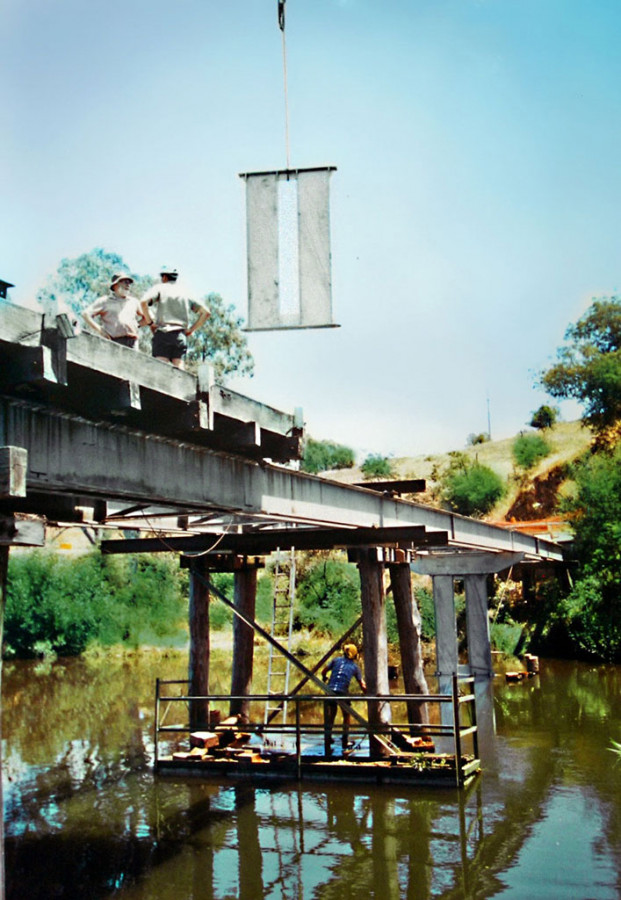A badly deteriorated timber deck, badly deteriorated timber piles, only the steel girders remained serviceable. Could this bridge be rehabilitated? As it was the only access for local residents, businesses, and tourists, would it take long? Since the Shire had limited resources could the cost be kept to a minimum? Fortunately the answers were: yes, yes, and yes.
Luckily, the timber piles, though badly split and/or rotted away, were quite sound below ground and/or water level, and a solution was devised whereby the bridge could be rehabilitated in stages, which, as well as minimizing disruption, also spread the cost over 2 consecutive years.
Stage One involved pouring concrete pile caps encapsulating the timber piles. A few days later concrete pedestals were poured inside a purpose built steel mould mounted on each of the pile caps, in turn, on consecutive days. This was done by temporarily removing a couple of timber deck planks at each pile group, to allow access. The bridge only needed to be closed for a few hours during the pouring of the concrete.
Stage Two involved placing the galvanized steel columns and headstocks. This necessitated jacking the steel girders slightly to allow the new columns and headstocks to be swung in separately underneath, and bolted together. Then the steel girders were lowered on top the crossheads and fixed in position. The timber piles were then cut off leaving the bridge on its new supports. The ends of the piles were “grubbed out” and sealed off with concrete plugs.
Stage Three involved stripping the timber deck completely and replacing with precast “Quikdek” concrete slabs, and bolt-on guard railing.
A number of innovative methods were used for construction.
Structural connection between the timber piles and concrete pile caps was ensured by drilling and inserting several 25mm dia. steel dowels at 45 degrees in each pile. A purpose-built tubular drill jig facilitated this even though some dowels were almost a metre below water.
Instead of rigid formwork a shaped geotextile “bag” was stitched together surrounding each irregular pile group and reinforcement cage. Concrete, up to 10 cubic metres, was poured under water, by means of a tremie (pipe) inserted in a gap made by temporary removing a couple of timber deck planks. The geofabric was very effective in containing the concrete, with virtually no contamination of the pristine river. Proof of this was provided by one of the crew who landed a 1.5 kg brown trout during one concrete pour, a few metres downstream.
Throughout the project the bridge was only closed to traffic for a few hours on certain days.

